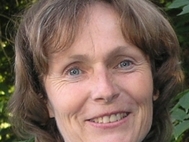
Sea slugs of the Sangihe Islands
Indonesia is famous for its underwater biodiversity, which attracts many tourists, especially divers. This is also true for Sangihe Islands Regency, an area composed of several islands in the northern part of North Sulawesi. However, Sangihe Islands Regency is much less known than, e.g., Bunaken National Park (BNP, North Sulawesi). The main island, Sangihe, has recently experienced an increase in tourism and mining activities with potentially high impact on the environment. Recently, monitoring projects began around BNP using marine Heterobranchia as indicators for coral reef health. No information about this taxon exists from the remote islands in North Sulawesi. The present study represents the first monitoring study ever and focuses on marine Heterobranchia around Sangihe. In total, 250 specimens were collected, which could be assigned to Sacoglossa (3), Anthobranchia (19), and Cladobranchia (1). Despite the low number (23 versus 172 in BNP), at least eight species (35%) are not recorded from BNP, probably indicating differences in habitat, but also influence of a strong El Niño year in 2016. Here we also report for the first time a Chromodoris annae specimen mimicking C. elisabethina, and the discovery of a new Phyllidia species.






